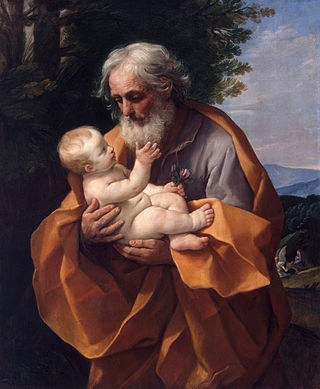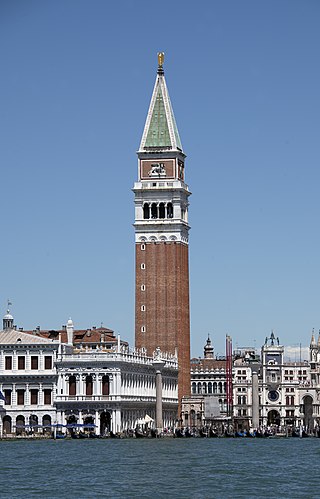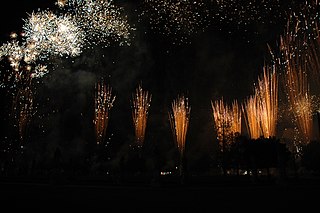
May Day is a European festival of ancient origins marking the beginning of summer, usually celebrated on 1 May, around halfway between the Northern Hemisphere's Spring equinox and June solstice. Festivities may also be held the night before, known as May Eve. Traditions often include gathering wildflowers and green branches, weaving floral garlands, crowning a May Queen, and setting up a Maypole, May Tree or May Bush, around which people dance and sing. Bonfires are also a major part of the festival in some regions. Regional varieties and related traditions include Walpurgis Night in central and northern Europe, the Gaelic festival Beltane, the Welsh festival Calan Mai, and May devotions to the Blessed Virgin Mary. It has also been associated with the ancient Roman festival Floralia.

Saint Joseph's Day, also called the Feast of Saint Joseph or the Solemnity of Saint Joseph, is in Western Christianity the principal feast day of Saint Joseph, husband of the Virgin Mary and legal father of Jesus Christ, celebrated on 19 March. It has the rank of a solemnity in the Catholic Church. It is a feast or commemoration in the provinces of the Anglican Communion, and a feast or festival in the Lutheran Church. Saint Joseph's Day is the Patronal Feast day for Poland as well as for Canada, persons named Joseph, Josephine, etc., for religious institutes, schools and parishes bearing his name, and for carpenters. It is also Father's Day in some Catholic countries, mainly Spain, Portugal, and Italy. It is not a holy day of obligation for Catholics in the United States.

The Patriarchal Cathedral Basilica of Saint Mark, commonly known as St Mark's Basilica, is the cathedral church of the Patriarchate of Venice; it became the episcopal seat of the Patriarch of Venice in 1807, replacing the earlier cathedral of San Pietro di Castello. It is dedicated to and holds the relics of Saint Mark the Evangelist, the patron saint of the city.

Midsummer is a celebration of the season of summer occurring near the date of the summer solstice which is known in solar reckoning as the mid-point of the season. As the precise date of the summer solstice can vary from year to year, different traditions may celebrate or fix Midsummer at different dates or under different names occurring on or around the actual solstice. A variety of traditions have developed often rooted in regional, spiritual, or religious practices. Traditionally, Midsummer is on the first Saturday after June 20th, though it is often celebrated on Midsummer's Eve, on the day before.

Lucia of Syracuse (283–304), also called Saint Lucia was a Roman Christian martyr who died during the Diocletianic Persecution. She is venerated as a saint in Catholic, Anglican, Lutheran, and Eastern Orthodox Christianity. She is one of eight women explicitly commemorated by Catholics in the Canon of the Mass. Her traditional feast day, known in Europe as Saint Lucy's Day, is observed by Western Christians on 13 December. Lucia of Syracuse was honored in the Middle Ages and remained a well-known saint in early modern England. She is one of the best known virgin martyrs, along with Agatha of Sicily, Agnes of Rome, Cecilia of Rome, and Catherine of Alexandria.

Saint John's Eve, starting at sunset on 23 June, is the eve of the feast day of Saint John the Baptist. This is one of the very few feast days marking a saint's birth, rather than their death. The Gospel of Luke states that John was born six months before Jesus; therefore, the feast of John the Baptist was fixed on 24 June, six months before Christmas. In the Roman calendar, 24 June was the date of the summer solstice, and Saint John's Eve is closely associated with Midsummer festivities in Europe. Traditions are similar to those of May Day and include bonfires, feasting, processions, church services, and gathering wild plants.
A patronal feast or patronal festival is a yearly celebration dedicated – in countries influenced by Christianity – to the 'heavenly advocate' or 'patron' of the location holding the festival, who is a saint or virgin. The day of this celebration is called patronal feast day, patronal day or patron day of said location.

Saint Nicholas Day, also called the Feast of Saint Nicholas, observed on 6 December ) in Western Christian countries, and on 19 December in Eastern Christian countries using the old church Calendar, is the feast day of Saint Nicholas of Myra; it falls within the season of Advent. It is celebrated as a Christian festival with particular regard to Saint Nicholas' reputation as a bringer of gifts, as well as through the attendance of church services.

Public holidays in Italy are established by the Italian parliament and, with the exception of city or community patronal days, apply nationwide. These include a mix of national, religious and local observances. As for Whit Monday, there is an exception for South Tyrol. In Italy there are also State commemoration days, which are not public holidays.

St Mark's Campanile is the bell tower of St Mark's Basilica in Venice, Italy. The current campanile is a reconstruction completed in 1912, the previous tower having collapsed in 1902. At 98.6 metres (323 ft) in height, it is the tallest structure in Venice and is colloquially termed "el paròn de casa". It is one of the most recognizable symbols of the city.

The Feast of San Gennaro, also known as San Gennaro Festival, is a Neapolitan and Italian-American patronal festival dedicated to Saint Januarius, patron saint of Naples and Little Italy, New York.

Saint Martin's Day or Martinmas, and historically called Old Halloween or Old Hallowmas Eve, is the feast day of Saint Martin of Tours and is celebrated in the liturgical year on 11 November. In the Middle Ages and early modern period, it was an important festival in many parts of Europe, particularly Germanic-speaking regions. In these regions, it marked the end of the harvest season and beginning of winter and the "winter revelling season". Traditions include feasting on 'Martinmas goose' or 'Martinmas beef', drinking the first wine of the season, and mumming. In some German and Dutch-speaking towns, there are processions of children with lanterns (Laternelaufen), sometimes led by a horseman representing St Martin. The saint was also said to bestow gifts on children. In the Rhineland, it is also marked by lighting bonfires.

Isidore the Laborer, also known as Isidore the Farmer, was a Spanish farmworker known for his piety toward the poor and animals. He is the Catholic patron saint of farmers, and of Madrid; El Gobernador, Jalisco; La Ceiba, Honduras; and of Tocoa, Honduras. His feast day is celebrated on 15 May.

Ferragosto is a public holiday celebrated on 15 August in all of Italy. It originates from Feriae Augusti, the festival of Emperor Augustus, who made 1 August a day of rest after weeks of hard work on the agricultural sector. It became a custom for the workers to wish their employers "buon ferragosto" and receive a monetary bonus in return. This became law during the Roman Renaissance throughout the Papal States. As the festivity was created for political reasons, the Catholic Church decided to move the festivity to 15 August, which is the Assumption of Mary allowing them to include this in the festivity.
Little Italy, Connellsville is an area on the west side of Connellsville, in Fayette County, Pennsylvania.

Maltese folklore is the folk tradition which has developed in Malta over the centuries, and expresses the cultural identity of the Maltese people. Maltese folklore, traditions and legends still live in the minds of the older-generations, and these are slowly being studied and categorized, like any other European tradition. A number of national and international folklore festivals are undertaken on an annual basis, some of which are under the patronage of the National Folklore Commission and the Ministry for Culture and the Arts. Notably, every December the Malta International Folk Festival is staged in Valletta, with delegates from countries around the World.
Carnival in Italy is a farewell party to eat, drink, and have fun before the limitations and solemnity of Lent. About a month before Ash Wednesday, Italians celebrate over many weekends with parades, masks, and confetti. The origins of this event may be traced to ancient Greece and Rome, when they worshipped Bacchus and Saturn. Some think they date back to archaic winter-to-spring ceremonies. Despite its pagan origins, the event was so extensively celebrated and the tradition so powerful that it was swiftly altered to fit into Catholic rituals. Carnival in Italy is traditionally celebrated on Fat Tuesday, but the weekend prior features activities as well. The most famous Carnivals in Italy are those held in Venice, Viareggio, Ivrea, Cento, Apulia and Acireale. These Carnivals include masquerades and parades.

Traditions of Italy are sets of traditions, beliefs, values, and customs that belongs within the culture of Italian people. These traditions have influenced life in Italy for centuries, and are still practiced in modern times. Italian traditions are directly connected to Italy's ancestors, which says even more about Italian history.

The Flag of the Republic of Venice, commonly known as the Banner or Standard of Saint Mark, was the symbol of the Republic of Venice, until its dissolution in 1797.

Saint Mark's relics, the remains of Mark the Evangelist, are held in St Mark's Basilica in Venice, Italy.

















